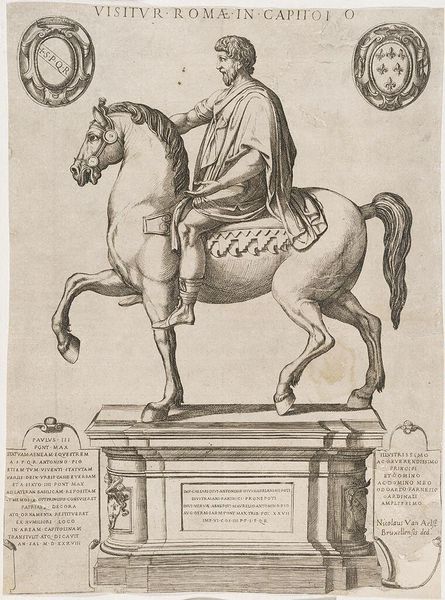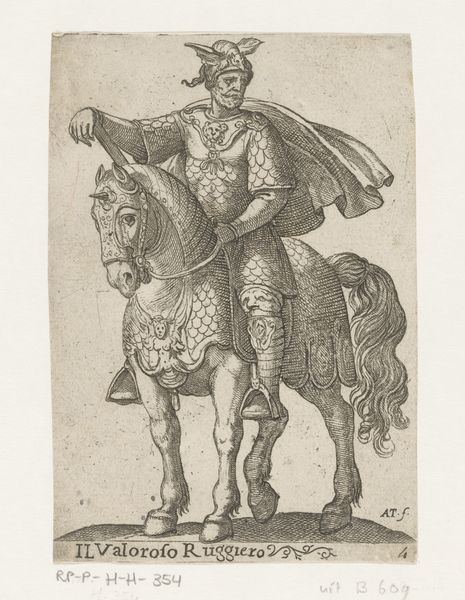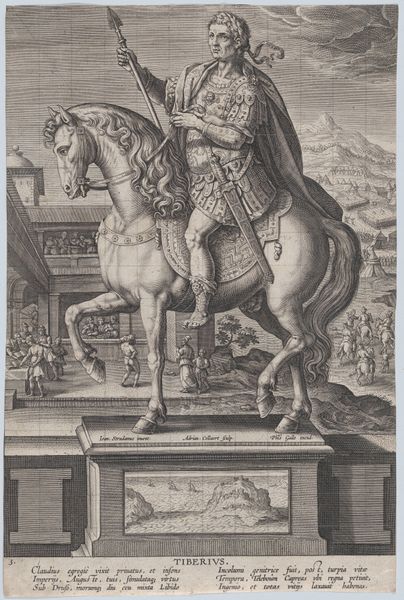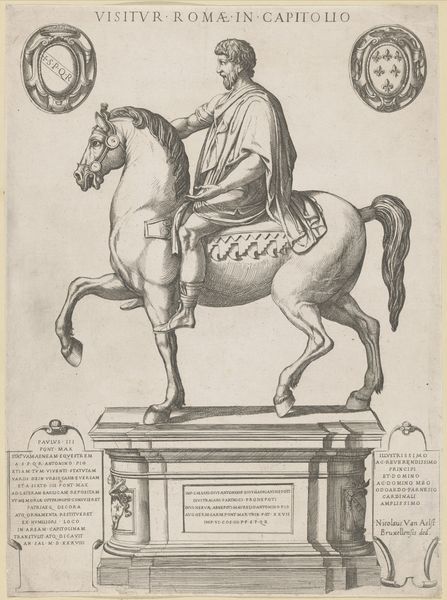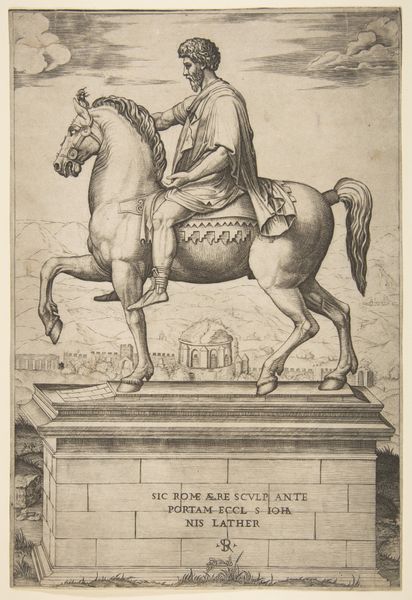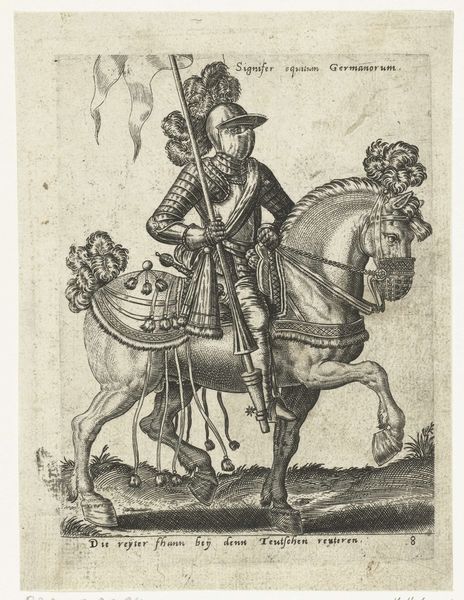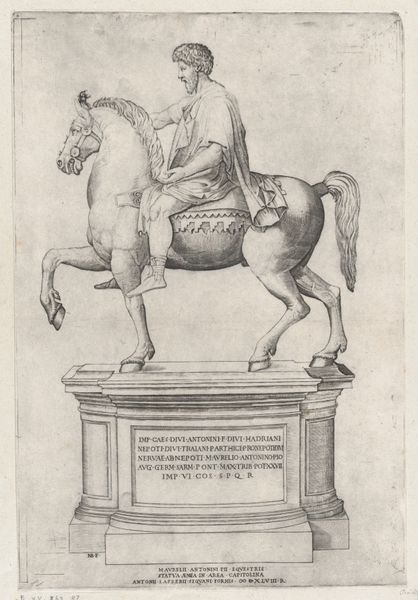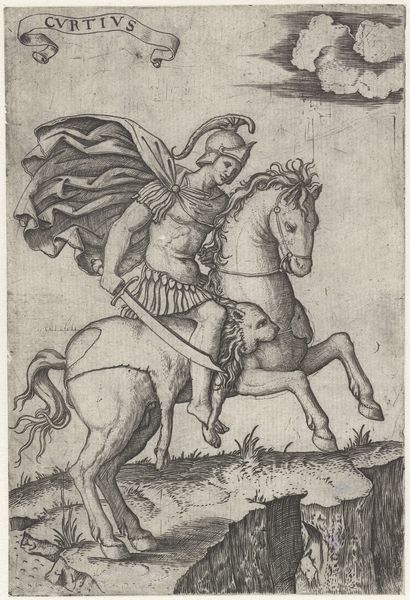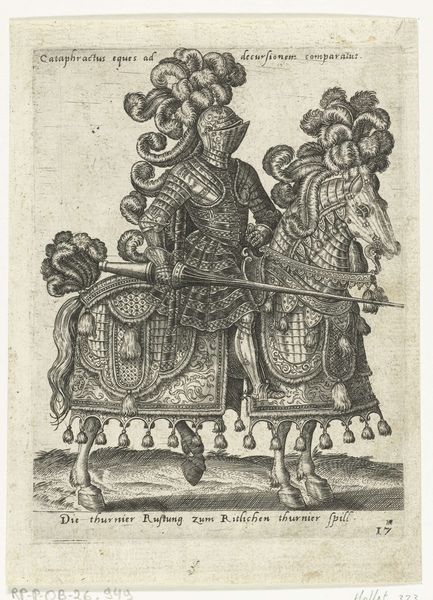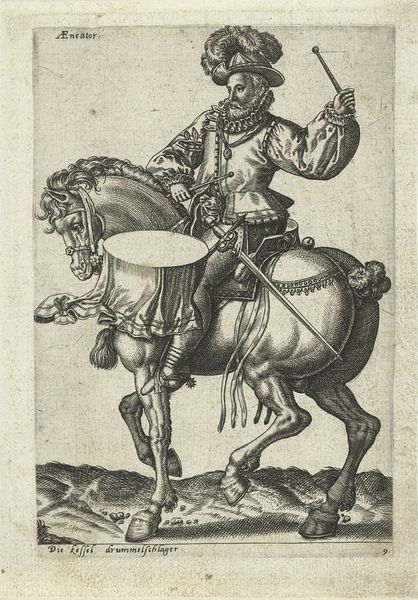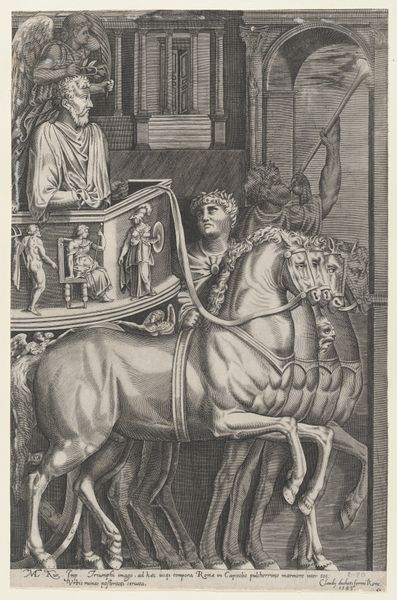
engraving
#
portrait
#
baroque
#
landscape
#
figuration
#
line
#
portrait drawing
#
genre-painting
#
history-painting
#
academic-art
#
engraving
#
erotic-art
Dimensions: height 317 mm, width 223 mm
Copyright: Rijks Museum: Open Domain
Curator: The artwork before us is an 18th-century engraving, "Portret van Paus Clemens XIII te paard," attributed to Filippo Pilaja. It captures Pope Clement XIII on horseback. Editor: My first impression is how serene it appears. The light and airy feel of the lines gives it a delicate quality, despite the imposing figure of the Pope on horseback. Curator: Indeed. Placing the pontiff, who had inherited so much geopolitical mess in the latter half of the century, on a magnificent, elaborately adorned steed tells its own story. Notice the landscape elements used to glorify his rule and project power and grace in equal measure, at a moment in history when the papal states and authorities in Europe were in decline. Editor: I am struck by the artist's use of line; the intricacy and details etched into the horse’s tack, contrasted against the plain weave of the cleric's vestments is wonderful. See how Pilaja manipulates the density of the lines to simulate shadow and volume, giving the forms real dimension, wouldn't you say? Curator: Absolutely, the contrast further underscores a visual statement: temporal power interwoven with spiritual authority. We also see here a clear statement about art under papal patronage, a fascinating moment, particularly in terms of religious art entering new visual spheres. Editor: What resonates with me is how this combination of formal lines and Baroque flair makes for an intriguing study in textures. The smoothness implied in the Pope’s clothing compared to the ornate trappings of his horse, even the varying rendering of architectural structures, is visually delightful. Curator: Examining "Portret van Paus Clemens XIII te paard", we gain a better sense not only of how rulers sought to portray themselves, but also the crucial role imagery played in legitimizing power during a time of significant upheaval. Editor: Agreed, and analyzing these lines reminds me of the inherent elegance, regardless of socio-historical context, that draftsmanship like this conveys across the centuries.
Comments
No comments
Be the first to comment and join the conversation on the ultimate creative platform.
